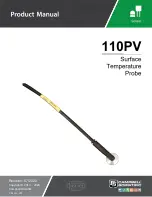
16
SCAIME Manual : NU-eNod4B-ETH-E-236708-D.docx
4.1.2
Prevent Electromagnetic disturbances
Observe these basic rules to guard against Electromagnetic disturbances.
Rule 1:
Large area grounding contact
When installing the devices, make sure that the surfaces of inactive metal parts are properly bonded to chassis
ground (see following sections).
Bond all inactive metal parts to chassis ground, ensuring large area and low-impedance contact (large cross-
sections).
When using screw connections on varnished or anodized metal parts, support contact with special contact washers
or remove the protective insulating finish on the points of contact.
Wherever possible, avoid the use of aluminium parts for ground bonding. Aluminium oxidizes very easily and is
therefore less suitable for ground bonding.
Provide a central connection between chassis ground and the ground/protective conductor system.
Rule 2:
Proper cable routing
Organize your wiring system into cable groups (high-voltage/power supply/signal/measurement/data cables).
Always route high-voltage and data cables in separate ducts or in separate bundles.
Install the measurement cables as close as possible to grounded surfaces (e.g. supporting beans, metal rails, steel
cabinet walls).
Rule 3:
Fixing the cable shielding
Ensure proper fixation of the cable shielding.
Always use shielded data cables. Always connect both ends of the data cable shielding to ground on a large area.
Keep unshielded cable ends as short as possible.
Always use metal/metalized connector housings only for shielded data cables.
Shields of load cells must be connected to the pin ‘Shield’ of the load cell connector of the eNod4 or, in case of
junction box, directly on the body of this one.
Rule 4:
Special EMC measures
For cabinet or enclosure lighting in the immediate range of your controller, use incandescent lamps or interference
suppressed fluorescent lamps.
Rule 5:
Homogeneous reference potential
Create a homogeneous reference potential and ground all electrical equipment.
Use sufficiently dimensioned equipotential bonding conductors if potential differences exist or are expected between your
system components.
Equipotential bonding is absolutely mandatory for applications in hazardous areas.
















































